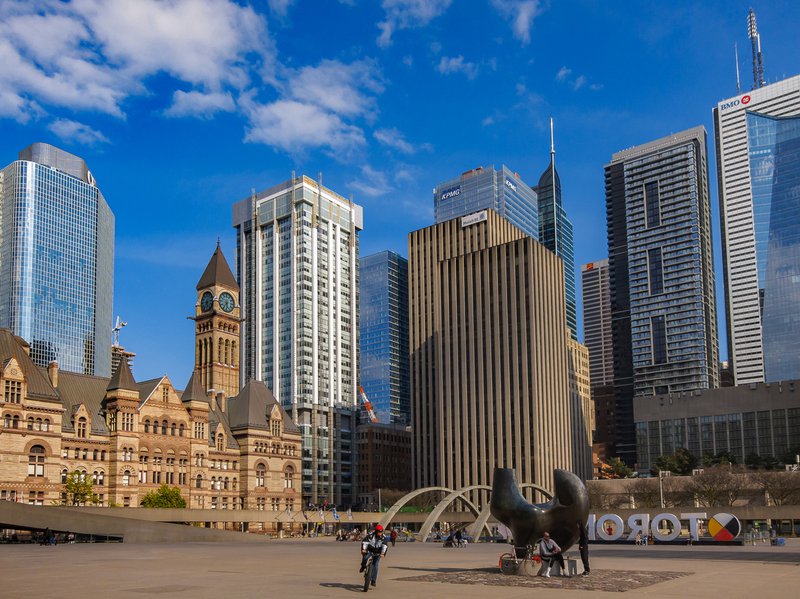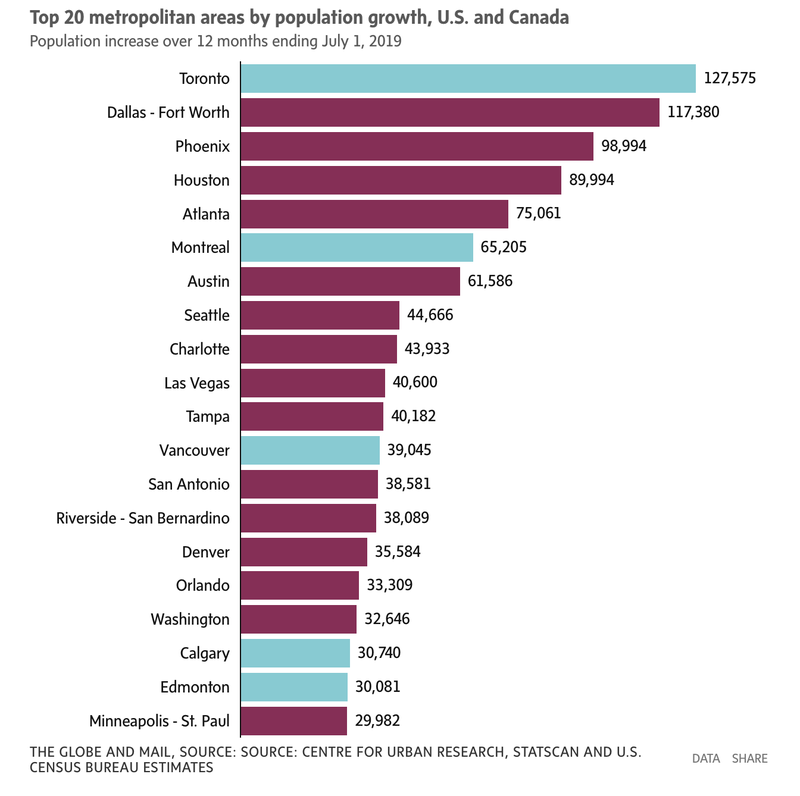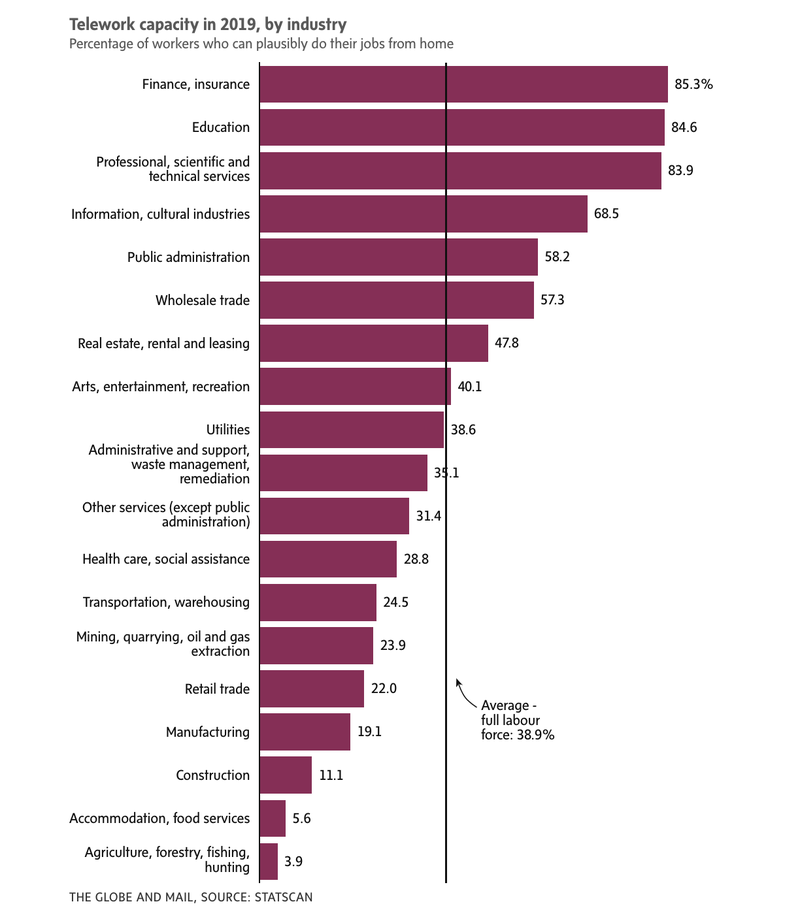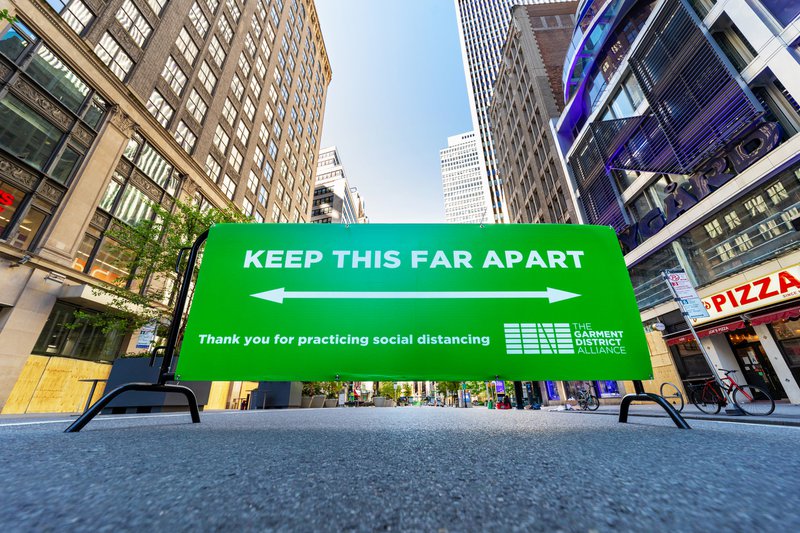
JOE BERRIDGE
Oct. 16, 2020
Joe Berridge is an urban planner and partner at design and planning firm Urban Strategies. He teaches at the University of Toronto and is the author of the book Perfect City.
Even the most diehard downtown dwellers have to confess their fantasies of leaving Canada’s big cities during the pandemic. I’m an unrepentant urbanist yet finding myself slowly seduced by the delights of rural Ontario and the liberations of the Zoom office. Surely nothing beats doing international video calls from the back of a sailboat drifting up a Prince Edward County creek.

If it’s happening to me, and to others envying the backyards, front yards and space of suburbia, will a whole wave of urban residents move home and workplace out of the central city? Has COVID-19 fundamentally changed our view of city life? And will that new perception change the city itself?
The long-term effects of the coronavirus pandemic on our cities are just beginning to be revealed.
The big urban centres have had the most casualties and are where pre-COVID-19 life and work patterns have been most disrupted. Does this mean high-density, high-intensity, big city urban life is over, that high-rise offices and apartments are unworkable and unliveable, and that everyone is headed for the suburbs and beyond?
The truth is, it’s too early to tell.
We’re still in the early days of this urban drama – by no means fully back at work and school. But now, at the six-month mark of the pandemic, we can see some clues about how our cities will respond.
Very slowly, that’s the one thing we do know.
Cities have great inertia; they are enormous, complex socio-physical objects of which probably less than 1 per cent change each year. The city we have now is largely the city we will have post-COVID-19.
Even if there was an initial widespread cultural rejection of high-density, big city life – and at this time the stories seem mostly anecdotal – there’s certainly no evidence of widespread panic. After all, people and businesses have leases and mortgages, jobs and families, communities and connections, which take years – not months – to restructure. After that much time, the sense of crisis could have passed, or have become the new normal.

The best guide to the future shape of cities is their direction of change before the pandemic – trends likely to get amplified rather than redirected. Canadian cities are growing very fast – our top five fastest-growing cities are all in the top 20 in the United States and Canada. The U.S.'s largest cities – New York, Los Angeles and Chicago – were actually static or declining in population pre-COVID-19, owing to lower immigration and significant departure of local residents. Not so for Canadian big cities, which were growing all over – from the downtowns, to the suburban centres and in satellite cities – powered by high and continuing levels of immigration and relocation from non-urban Canada. Toronto will likely remain the fastest growing city region in Canada and the U.S., having recently passed Chicago and, in a few decades, catching up on Los Angeles to become the countries’ second megalopolis after New York.
And it’s not all downtown expansion. Toronto’s suburban centres and surrounding cities, including Oakville, Markham, Hamilton, Kitchener-Waterloo and Barrie, and business and residential hubs around Vancouver, such as Surrey, Richmond and Burnaby, have been growing as rapidly. There’s no evidence of the downward shift in property prices being seen in global cities such as London and New York. Quite the contrary.
This isn’t going to change. In the years to come, Canada and its cities will likely be even more attractive to the rest of the world. Peace, order and good government seems the most effective urban recipe. But the urban balance might shift slightly from the centre to the periphery – again something that had already begun to happen, slowly reversing the trends of the past two decades.
Those previous decades saw a surge of people and jobs locating downtown, with consequent escalation in rents and prices of offices and housing. Why? Partly demographic, as the well-educated children of the baby boom reached adulthood, and partly lifestyle and work style. Young people go to big cities not just to work and live, but for sex, style, money and power. For ambition and anonymity. And for risk. All in the petri dish of downtown density. These drives have always been as powerful as their subsequent search for suburban security and community.
The structure of the modern megalopolis is not an accident – the dramatic rise of tech employment, two-earner families, the decline of manufacturing, the later date of marriage, smaller households, lifestyle consumerism, teamwork cultures, serial re-education and training – none of these societal trends looks to be diminished by COVID-19. All of them seem to prefer high-density, high-interaction environments.
Until, at a certain life stage, “two kids in a condo” becomes less attractive for millennials and out they go. They may now go a little faster and farther out, taking some of that house-price escalation and employment concentration with them, fuelling the recent rise of office concentrations in suburban and satellite centres. And Toronto boomers, who have been clogging up the housing market by remaining too long in their oversized houses, may go even farther out – to Peterborough, Belleville, Stratford, Orillia, Kingston and the best of cottage country. Expect to see them thrive as remote-working support centres.
Canadian cities, most of all Toronto, have seen an explosion of high-rise downtown employment. Recently a succession of tech moguls have pronounced “the end of the office.” I doubt it. Indeed, a number of leading tech firms have recently signed very big leases in midtown New York and central London. The buzz of workplace interactivity was, after all, the very reason they all moved downtown.
Clusters of bright people have become the wealth-creating engine of the modern economy. But, as one with that kind of job, I know I’m finding the emotional/cultural/"let’s have a virtual coffee" bandwidth of Zoom meetings an incomplete substitute for real human contact. Surveys of my firm’s staff suggest the same. About three-quarters want to be back in the office – most of the time.
We aren’t just machines for working. Anecdotes from colleagues in Europe, where knowledge workers in several cities are largely back in their workplaces, suggest that the familiar, intimate, interactive culture will re-establish itself quite quickly. None of the other significant tech advances of recent decades – such as e-mail, Skype, video conferencing – had significant long-term effects on the shape of the city.
It’s unlikely our enforced/encouraged work at home during the pandemic will. As at-home workers, we have drawn down what is likely a finite resource of social and human capital that now needs replenishing. We are still programmed to separate work and home lives, needing the journey to work, school and the store as the physical and emotional structure of our days. Will that structure loosen, become more mixed, more polycentric? Probably. Will it disappear? Unlikely.
Even at the height of the lockdown, only about a third of people were working from home. Somehow we forgot about construction workers, those in transportation, logistics, food preparation, retail and health care, service workers and many more such occupations. Statistics Canada estimates about 40 per cent of the work force might ultimately have jobs that can be done from home. That still leaves a large majority outside the home, often with complex, multiple work destinations.
So what about the half-a-million Toronto employees who work downtown? What happens to them? Will they all go back to the office? Some of the functional imperatives of physical distancing can get resolved – we see that happening now as people get more comfortable with wearing masks and with the formal dance of two-metre spacing. All offices are likely to go on some form of blended work/home arrangement, staggered hours and shift work at first, with those constraints steadily easing as – hopefully – rates of infection diminish and any outbreaks are better tracked and controlled.

But there are two wicked problems, for which solutions may be less simple. First, let’s address perhaps the slightly easier one: elevators.
The 104-storey One World Trade Center in lower Manhattan, which normally accommodates a work force of 8,000, has 71 elevators, one of the most extensive vertical circulation systems of any high-rise building. With current spacing restrictions, those people can’t all get into the building until early afternoon, at which time they would have already started to leave.
A comparable elevator capacity problem affects every high-rise office building, so a lot of technical fixes are being urgently examined by their owners and managers. Reprogramming of elevator speed and service, reserved time slots, no-touch operation, making all occupants face walls - along with in-place air-filtration, anti-viral UV and total sanitizer systems – all will become the new elevator normal.
Inside the office, the recent, dramatic trend toward open-plan and “hot desks” will return to what was standard only a decade ago: a floorplate of offices and cubicles. The average floor space per employee in modern offices been cut almost in half since then, a trend likely to be reversed. With those changes, the downtown office towers can probably adjust, although daily occupancy is likely to be reduced to about two-thirds of pre-COVID-19 levels.
The less technologically solvable, much more significant problem is that of urban transit. This scares the hell out of me. What if that substantially reduced daily downtown work force continues to turn away from transit in significant numbers? Transit ridership is catastrophically down in Canadian and other world cities. In most, car usage had returned to pre-COVID-19 levels by August, while subway ridership was at between a third and a half, with bus usage slightly higher.
If there is no return to previous ridership numbers, most transit systems are in a terrible financial situation. The economics of transit in all big cities pre-COVID-19 was already precarious – few could withstand even a 10-per-cent permanent drop in demand. What is most worrying is that in most big cities, such as London, Toronto, New York and Chicago, transit ridership was already flat or declining pre-COVID-19. Why? Probably a response to poor pricing and routing, inconvenience and low service quality. Commuter customers were looking at other options – a market trend now massively amplified by COVID-19 concerns about crowding.
How this is fixed I don’t know. These revenue declines, if permanent, will be clearly beyond municipal governments' ability to bear, and severely test senior governments' capacity to fund existing systems, let alone new transit lines. It’s perhaps the time to focus more on attracting the rider than on just engineering solutions. Transit needs a top-to-bottom scrub, and cleaner-than-clean operation no question, but it will also have to undergo a market transformation as a desirable consumer service to win riders back.
Off-peak fares to help spread the load through the day, loyalty reward pricing for regular but less frequent riders, cheerful greeters, customer care, stylish design and much more. Maybe even higher-priced premium service. Transit has never properly explored the market price for movement, and to get people out of their cars it may have to offer a Starbucks’ as well as a Timmys’ level of service. Reverting to the “pack 'em in” rush-hour style will be its death, with fatal consequences for cities and their finances.

In suburban lower-density districts, where the car remains the most convenient choice for most trips, we need a lot more experimentation. Beat Uber at its own game by granting franchises for smaller capacity, flexible-route jitney buses – semi-autonomous vehicles summoned by customers. Expand bike sharing services to provide electric-powered, weather-protected, one- and two-seater bikes. A revolution in urban mobility is necessary for things to stay the same.
And yes, more bike lanes. Of course. Hallelujah for Toronto’s new arterial Bloor-Danforth lane. But please, a sense of realism. According to Statscan, only 1.4 per cent of work trips are made by bike in the Greater Toronto Area, the vast majority in and around the downtown. Montreal, Calgary and Vancouver show similar numbers. Even if bike ridership was to somehow magically double, it pales in the face of the potential surge in car usage and loss of transit ridership.
“Carmageddon” – nightmare congestion – is coming. We will have to get really serious about the “war on the car.” So, like all bad things, let’s tax it. Universal road tolls, a significant surcharge on historically low gas prices and – following the lead of big cities such as Paris, London and New York – the banning of carbon-fuelled vehicles by 2040. What a tragedy to lose perhaps the greatest unexpected benefit of the early months of lockdown: the tantalizing quality of clean big city air.
One aspect of city life that will change significantly is how and where we shop. The COVID-19 shutdown has been catastrophic for retail, both big and small. Again, it was looking bad pre-COVID-19. Several major store chains – Neiman Marcus, J.C. Penney, Nordstrom, Macy’s – seem likely to at least curtail storefront business, and they are the anchors of big shopping malls. Closer to home, Hudson’s Bay and Indigo seem in big trouble. The six-month diversion to e-commerce has significantly changed people’s retail behaviour, probably permanently.
Expect most smaller malls to close and a significant contraction in the quick-serve retail and restaurants dependant on the “lunchtime economy” in office-heavy downtowns, given their reduced work force. And I fear heartbreak for a lot of Main Street shopping. All those already precarious, privately owned restaurants and specialty stores have taken a terrible hit, only slightly deferred by the outdoor dining reprieve. But the disinclination to indoor dining may take a long time to dispel.
In Toronto and other immigrant cities, street shopping will probably bounce back, since such enterprises are often entry-level and community-linked businesses. In smaller, less diverse centres there’s going to be an awful lot of vacancy.
A similar fate is faced by the “urban experience economy” – sports, concerts, museums, galleries, exhibitions, shows, events formal and informal. It looks to be a long time before mass gatherings will be possible, particularly indoors. Foundational attractions of the dynamic, lively city, it’s hard to imagine urban life without them. How this is fixed, particularly for businesses serving older demographics, I don’t know. A similar problem faces hotels and airlines. But a lot of motivated people are trying to figure it out and, because their business lives depend on it, they probably will.
So, is the dense city – that teeming, roiling mass of people, excitement and opportunity – all over? No, cities have shown themselves far more resilient in the face of comparable crises. But our recent experience has also confirmed a more sobering and historically enduring truth about the pandemic city: the story of who always gets hurt. The hyper-wealthy Upper West and East Sides of Manhattan are probably the densest neighbourhoods in the U.S., but their infection rates were a fraction of those in low-density districts in Queens and the Bronx a few miles away across the East River.
Eight of the nine worst affected districts in all of Britain were the poorest London boroughs. And the map of COVID-19 incidence in the Toronto area shows a familiar picture – the band of poor, inner-suburban communities in the northwest, north and northeast: Brampton, Rexdale, Jamestown, Agincourt, Malvern and more. In Montreal, the same pattern is revealed, in Montreal Nord, Ahuntsic-Cartierville and LaSalle.
COVID-19 sought out the lowest income, lowest health quality, most overcrowded, least-well transit-served, highest immigrant, most racialized neighbourhoods in city after city all over the world. (The only world city of which I am aware that has not followed this pattern is Vancouver. Bravo, Bonnie Henry.) These are also the neighbourhoods in which many of those who are doing the hard work in the COVID-19 war, most notably health-care and personal-care workers, truckers, warehouse goods handlers, retail staff and more, actually live.
Toronto’s post-COVID-19 action plans must be focused there. City council should direct all its major capital spending to areas north of Highway 401 for the next decade or so. The downtown and waterfront have had their turn. Indeed, as the wealthiest parts of one of the most dynamic cities in the world, they should by now be self sustaining – or we have been doing something wrong. Enough.
Several key initiatives stand out. These inner suburban districts are home to much of Toronto Community Housing’s stock of some 58,500 units, housing 110,000 residents – a sizable city in itself. The accumulated maintenance deficit on this portfolio is $2.6-billion.
Updates such as replacing old elevators and air conditioning, removing mould, freeing up common space, making safe meeting places and adding educational, training and recreational facilities is where post-COVID-19 spending must be most effectively focused. To its credit, Toronto Community Housing has been working hard with senior levels of government to help to address this deficit, but the speed and scale of that program has to be accelerated.
These neighbourhoods are also served by some of the busiest bus routes in North America. Packed with passengers, slow and lumbering in mixed traffic, these buses are often the only route to work for residents, many of whom often have multiple workplace destinations. They must now be accommodated in exclusive priority bus lanes and taken out of general traffic – a relatively inexpensive and essential transfer of road space from private vehicles to those who need it more. The Toronto Transit Commission has rightly started on this program, with the first such route to open this year.
Many of these districts are built at relatively low density. Intensification – filling in all their many under- and unused spaces – could provide communities the retail and social support now lacking, along with a lot more housing for all income levels. Foolish planning restrictions that complicate such initiatives should be swept away.

Like most with low-income jobs, few living in these neighbourhoods can work from home, and many have multiple workplaces all over the city. The pedal-powered “15-minute neighbourhood” notions appropriate for downtown have little lived reality for such communities. Something more robust is required: a 15-year program of intelligent, comprehensive and speedy regeneration, accompanied by the right forms of guaranteed income support to place a floor under poverty. Frankly, we owe these residents big time.
Previous urban pandemics have spawned major changes to the shape of the city. In the middle of the 19th century, Central Park was commissioned by New York’s Board of Health in response to that city’s unsanitary overcrowding. At the same time, Paris’s lack of healthy drinking water and clean air was dramatically addressed in Baron Haussmann’s total remake of that city. The stinking, sewage-filled River Thames in London was cleaned up by Joseph Bazalgette’s comprehensive infrastructure improvements.
All big cities now face a similar moment, but the locus of contemporary intervention has to shift from the inner city to the inner suburbs, and its focus broadened from needed physical and mobility improvements to an action plan that places income support, social services, education and training at its heart.
Is big city density dead? No. Will the shape of the city change? Yes, but slowly. Could we use this opportunity to redress the glaring inequity of that city’s socio-economic structure and service quality? I hope so.
This Globe and Mail article was legally licensed by AdvisorStream.
© Copyright 2025 The Globe and Mail Inc. All rights reserved.


